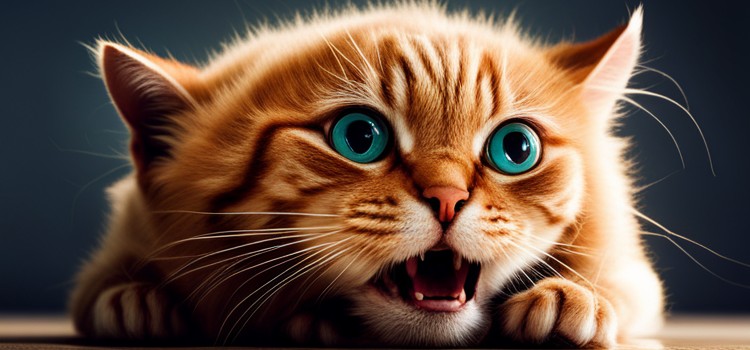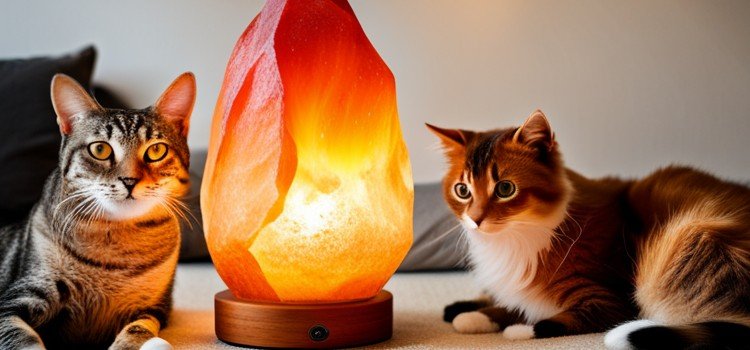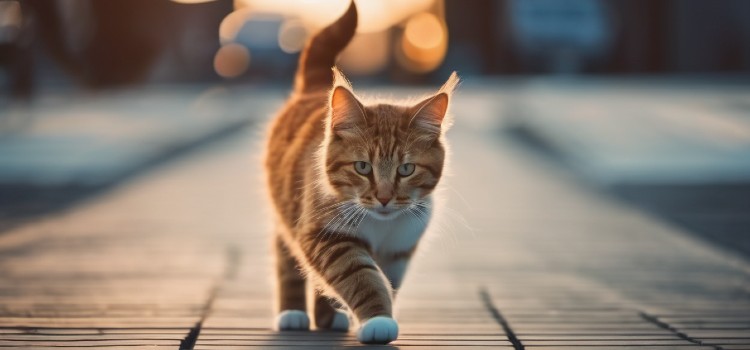As an Amazon Associate committed to the mission of improving the lives of our readers, Live-Clear.com receives a small commission from eligible purchases made through our affiliate links. This revenue enables us to keep producing insightful articles and other material.
Cats constantly groom themselves and sleep. As every cat owner knows, felines can spend hours grooming themselves every day.
This self-cleaning ritual includes licking their fur, paws and face to get rid of any dirt or debris. In fact, cats are so meticulous about their hygiene that they are often referred to as “self-cleaning ovens”. Along with grooming, cats also spend a lot of time sleeping – up to 15-20 hours a day.
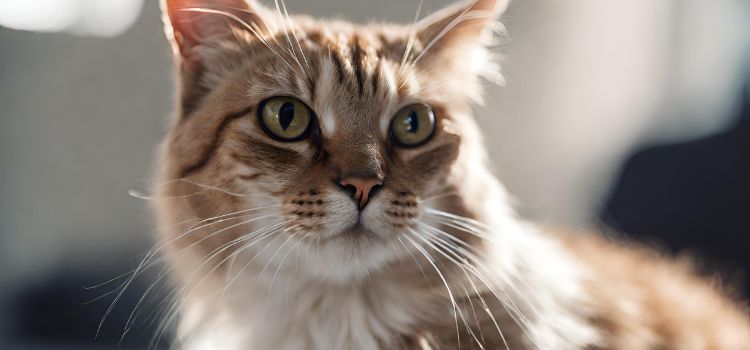
However, when they aren’t sleeping or grooming, cats can be playful, curious and independent creatures. They are also known for their sharp claws, hunting instincts and ability to form strong bonds with their owners. We’ll explore what cats do constantly and why they do it.
Feline Body Language
As cat owners, it’s no secret that feline body language can communicate a lot about what our pets are feeling. From the position of their ears to the way they arch their backs, cats have a unique way of expressing themselves. One of the most fascinating aspects of feline body language is their tail movements, which can convey everything from happiness to fear. Let’s dive into what your cat’s tail is trying to tell you, as well as how to understand their purring.
What Your Cat’s Tail Is Trying To Tell You
Have you ever noticed your cat’s tail twitching or thrashing back and forth? These movements can indicate a number of different emotions, depending on the context. Let’s take a look at some common tail movements and what they mean:
| Tail Position | Meaning |
|---|---|
| Straight up in the air with a slight curve at the tip | Confident and content |
| Straight up with a puffed-out tail | Aggressive or frightened |
| Lowered and tucked between legs | Fearful or submissive |
| Slowly moving back and forth | Calm and relaxed |
| Rapidly thrashing back and forth | Fearful or agitated |
Understanding A Cat’s Purr
When your cat is curled up on your lap, purring contentedly, it’s hard not to feel relaxed yourself. But why do cats purr, and what does it mean? While the exact reason for purring isn’t fully understood, it’s believed to be a way for cats to communicate comfort and contentedness.
Interestingly, cats also purr when they’re in pain or feeling stressed, which can be a little confusing for pet owners. In this context, purring may actually be a way for cats to self-soothe and alleviate discomfort.
Being able to read your cat’s body language is an important part of understanding their needs and emotions. By paying attention to their tail movements and purring, you’ll be better equipped to provide a comfortable and stress-free environment for your furry friend.

Mysterious Sleeping Schedules
Cats are known for their mysterious sleeping schedules, as they tend to sleep up to 16 hours a day in short naps rather than one long stretch. This is due to their natural survival instincts, allowing them to be alert and ready for any potential prey or danger.
Cats are known for their unique sleeping schedule. They can sleep up to 16 hours a day, but it can vary from one cat to another. It’s no secret that they love sleeping, and it’s not uncommon to find your feline friend curled up in a ball, dozing off peacefully.
Why Cats Sleep So Much During The Day
The reason why cats sleep so much during the day dates back to their evolution as predators. They are naturally nocturnal creatures, which means their bodies are designed to be active at night. Back when cats were wild animals, they spent most of their waking hours hunting and stalking their prey, which were also active during the night. To conserve energy during the day, cats have adapted to sleeping for long periods.
The Science Behind Kittens Sleeping In Piles
If you’ve ever seen a litter of kittens, you may have noticed they sleep in small piles. The reason behind this behavior is adorable and scientific. Kittens have an innate instinct to huddle together for warmth. They get comfort and warmth from their siblings, and this behavior stems from their litter days when they were dependent on their mother for warmth and nourishment.
Cats’ sleeping schedule is a fascinating subject to study. While most people might think it’s strange that cats sleep so much during the day, it’s just their natural instinct. Understanding your feline friend’s sleeping pattern can help you better take care of them by knowing when they need rest and when they want to play.
The Art Of Grooming
Cats are known for their constant grooming habits and spend a lot of their time licking their fur, cleaning their paws, and even cleaning their companions. This behavior not only keeps them clean but also helps regulate their body temperature and helps them relax.
Cats are widely known for their fastidious nature and one of their most common behaviors is grooming. Grooming is an essential part of a cat’s life which includes cleaning their fur, paws, and face. It might seem like a mundane activity, but grooming serves various purposes besides keeping your feline buddy clean. It is a way for a cat to protect itself, as well as establish and maintain social bonds.
Why Cats Groom Themselves After Eating
It’s a common sight to see your cat grooming themselves after having their meal. This behavior might seem strange to a casual observer, but there is a reason behind it. Cats have a highly developed sense of hygiene and prefer to keep themselves clean at all times. When a cat eats, it’s possible for food remnants to stick to their fur and grooming themselves is a way to get rid of any unwanted particles. Cats are also sensitive to smells, and grooming helps to remove any unpleasant odor that might have accumulated during mealtime.
How Cats Use Grooming To Strengthen Relationships With Other Cats
Cats are social creatures and grooming is one of the ways they strengthen their social bonds. Cats are known to groom each other, and this act has been described as an essential behavior in the cat social structure. Grooming is a sign of affection, and when one cat grooms another, it strengthens their bond and reinforces their social hierarchy. Grooming also serves as a way for cats to establish trust and familiarity with new cats. By grooming each other, cats learn to recognize the scents and behaviors of other cats in their social group, which helps to foster better social dynamics.
Grooming is an essential part of a cat’s life, and it serves various purposes, including maintaining hygiene, removing unwanted odors, and strengthening social bonds. By understanding why cats groom themselves and each other, we can better appreciate this behavior and the role it plays in a cat’s life.
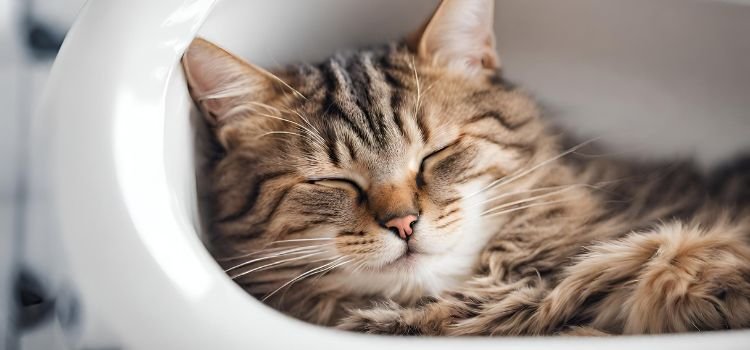
Playtime Behaviors
Cats are always up to something. Playtime behaviors like chasing objects, pawing, and batting are common. Pouncing, jumping, and hiding are all part of their playtime routine.
Cats are known for their playful nature and it’s an essential part of their daily routine. Playtime provides them with both physical activity and mental stimulation. When t hey are not sleeping or eating, they are engaged in different types of playtime behaviors such as stalking, pouncing, wrestling, and hunting. In this post, we will discuss various playtime behaviors of cats and why they behave the way they do during playtime.
Why Cats Love To Play With String
Cats love to play with string; it’s one of their favorite toys. But, have you ever wondered why? Well, it’s their natural instinct to hunt and stalk prey. When a cat sees a string moving, it triggers their hunting instincts, and they become alert. The string mimics the movement of prey, and the cat views it as its prey. That’s why they pounce on it, kick it, and bite it. Playing with a string helps cats to satisfy their hunting instincts and provides physical activity.
Understanding Your Cat’s Hunting Instinct
Cats’ love for playtime with string and other toys is rooted in their hunting instinct. In the wild, cats hunt for their food, and they need to be strategic and focused to catch their prey. Playtime helps them to sharpen their hunting skills, stay agile, and mentally stimulated. When they are in play mode, they become alert, focused, and their reflexes become quicker. Playing also helps to reduce stress and anxiety in cats and promotes bonding between owners and their pets.
Summary
Cats are playful creatures, and playtime is an essential part of their daily routine. Understanding their love for string and other toys and their hunting instinct can help you engage with your feline friends better. So, make sure you spend some quality playtime with your cat every day. It’s not only good for your cat’s physical and mental health, but it’s also an excellent bonding opportunity between you and your furry friend.
Mischievous Behaviors
Cats are notorious for their mischievous behaviors and constant curiosity. From knocking things over to scratching furniture, these furry felines always seem to be up to something. Whether they are playing or simply seeking attention, their antics can be both amusing and frustrating for their owners.
Cats are known to be curious and playful creatures. However, their mischievous behavior can sometimes be frustrating for pet owners. They have a habit of knocking things over, especially when you least expect it. They also tend to become active at night, running around the house and making a lot of noise. In this post, we will discuss the possible reasons behind two of the most common mischievous behaviors of cats: why they knock things over and what is behind the things we call ‘nighttime zoomies.
Why Cats Knock Things Over
Cats knocking things over is a common occurrence. And while it may seem like they are doing it just to be annoying, there are actually several reasons for this behavior.
- Firstly, cats are naturally curious animals and they enjoy exploring their environment. They use their paws to touch and feel objects, which may sometimes result in accidentally knocking them over.
- Secondly, cats use this behavior as a form of play, especially when they don’t have access to interactive toys or other cats to play with. They like to watch objects fall and roll, keeping them engaged and entertained.
- Lastly, cats may also knock things over for attention-seeking purposes, especially if they are feeling neglected or ignored by their owners.
Explaining Nighttime Zoomies
Nighttime zoomies, also known as night crazies or midnight crazies, are a common feline behavior where cats become extra active during the night. This can include running around the house, jumping on furniture, and engaging in other mischievous behavior. This behavior is often seen in cats that are kept indoors and may be a way for them to release energy. Additionally, cats are nocturnal animals, which means they are naturally more active at night. Therefore, nighttime zoomies may simply be a reflection of their natural behavior.
Cats are mischievous creatures but their behavior is often an indication of their needs and desires. Pet owners should provide their cats with enough toys and attention to keep them engaged and entertained. Additionally, providing them with a safe space to play and explore can help prevent unnecessary damage to household items and give the cats the environment they need to be happy.

Talking Like A Cat
Cats are fascinating creatures, and one of the most intriguing things about them is their unique way of communicating with us. They have a plethora of sounds, from soft purring to loud meows, which they use to express themselves and convey different messages.
What Different Meows Mean
It’s interesting to note that cats don’t just meow to get our attention; they use distinct meows to communicate different needs or emotions. Here are some of the common meows and their meanings:
| Meow | Meaning |
|---|---|
| Short, high-pitched meow | Greeting or hello |
| Long, drawn-out meow | Demanding attention or food |
| Low-pitched, throaty meow | Complaining or dissatisfaction |
| Chirping or trilling sounds | Excitement or happiness |
By paying attention to the different meows your cat makes, you can get a better understanding of what they want or how they are feeling.
Why Cats Sometimes Bring You Dead Animals
Another bizarre yet common behavior of cats is bringing us dead animals, such as birds or rodents. While it may be unpleasant for us humans, this is a sign of affection and kitty love. Cats are natural hunters, and bringing us their prey is like showing off their skills and offering us a gift.
It’s essential to acknowledge and thank your cat for their present, even if it’s not something you want. Refusing or scolding them for their behavior can confuse or upset them, so it’s best to be gentle and loving in your response.
In conclusion, cats have a unique way of talking, and by understanding their meows and behaviors, we can build a stronger bond with these fascinating creatures.

Dietary Habits
Cats are known for constantly grazing on small amounts of food throughout the day. They are natural hunters and prefer small, frequent meals rather than large ones. Additionally, cats tend to drink little water, making it important to provide fresh water at all times.
Why Cats Prefer Wet Food Over Dry
Cats are known to be picky eaters, but did you know that wet food is actually their preferred choice over dry kibble? Wet food contains more moisture, which is essential for maintaining a cat’s overall health and hydration. Additionally, wet food contains higher amounts of protein and fat, which are crucial for a cat’s growth and development. It also adds variety to their diet, making mealtime more enjoyable for our feline friends.
Understanding Your Cat’s Water Drinking Habits
Cats are notoriously bad at drinking water, which can lead to dehydration and other health concerns. To encourage drinking, it’s important to understand your cat’s habits. Some cats prefer running water and may benefit from a water fountain, while others prefer their water still and fresh. It’s also recommended to have multiple water bowls throughout the house, especially in areas where your cat spends the most time.
Cat Food: Dry Vs Wet
| Category | Dry Food | Wet Food |
|---|---|---|
| Hydration | Low moisture content, may lead to dehydration | High moisture content, helps maintain hydration |
| Nutrition | Lower levels of protein and fat | Higher levels of protein and fat |
| Palatability | May become stale or unappetizing | Varied textures and flavors, more appetizing for cats |
Overall, understanding your cat’s dietary habits is essential for their overall health and well-being. By providing them with a balanced diet of wet food and fresh water, you can help ensure they live a happy and healthy life.
The Litter Box
When it comes to owning a cat, one aspect of their behavior that owners must understand is their frequent use of the litter box. While dogs can be trained to go outside, most cats rely on a litter box as their primary bathroom. Understanding your cat’s litter box behavior is essential for keeping both your cat and your home healthy and clean. In this blog post, we will focus on the litter box and what cats do constantly.
Why Cats Dig Before Using The Litter Box
If you’re a new cat owner, you may be curious why your furry friend always digs before using the litter box. The truth is, cats have an innate instinct for digging and burying their waste products, related to their wild ancestor’s behavior. This natural instinct has been passed on through generations, and cats still exhibit the same behavior today, even if they have never been outdoors. By digging and burying their waste, cats can avoid attracting predators or alerting rivals to their presence.
Understanding Litter Box Aversions
Unfortunately, not all cats will use their litter boxes. Litter box aversions can be caused by various reasons, such as an unclean box, a box that is too small or too big, or even a location that is not private enough. If you notice that your cat is not using their litter box, it’s essential to investigate and try to fix the problem as soon as possible. If left unattended, your cat may develop inappropriate elimination habits, such as urinating or defecating outside of their litter box, leading to a smelly and unclean home.
Understanding your cat’s needs and creating a comfortable and clean litter box environment is crucial in maintaining a healthy and happy cat.
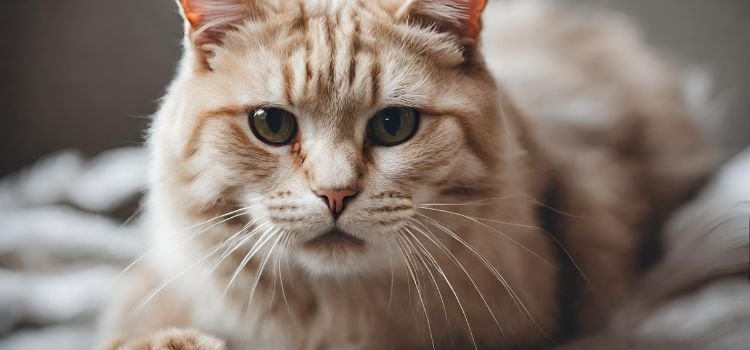
Conclusion
To sum up, cats are fascinating creatures with unique personalities and habits. From their constant grooming to their love of sleeping and hunting, feline behavior is a never-ending source of entertainment. Through better understanding of our furry friends’ quirks, we can strengthen our bond with them and provide better care.
Frequently Asked Questions For What Cats Do Constantly
Cats typically sleep, groom themselves, and play throughout the day. They may also spend time exploring their surroundings and hunting prey if they are outdoor cats. Indoor cats may spend more time lounging or interacting with their owners.
Cats often sleep for long hours, hunt for prey, groom themselves, play with toys or other animals, and show affection to their owners.
Cats sleep a lot. In fact, they can sleep up to 16 hours a day. They also spend a lot of time grooming themselves and exploring their surroundings. Additionally, many cats enjoy playtime with their owners and other cats.
Most cats spend their time sleeping, grooming, and observing their surroundings. They can sleep up to 16 hours a day, and their grooming habits can take up a significant amount of time. When they are not sleeping or grooming, they are usually watching and observing their environment.
Cats sleep, groom, and play during the day. They also hunt for prey and explore their territory.
So the next time your cat jumps on the counter or scratches your couch, try to see things from their perspective and appreciate the wonder of their world.
Amazon and the Amazon logo are trademarks of Amazon.com, Inc, or its affiliates.

